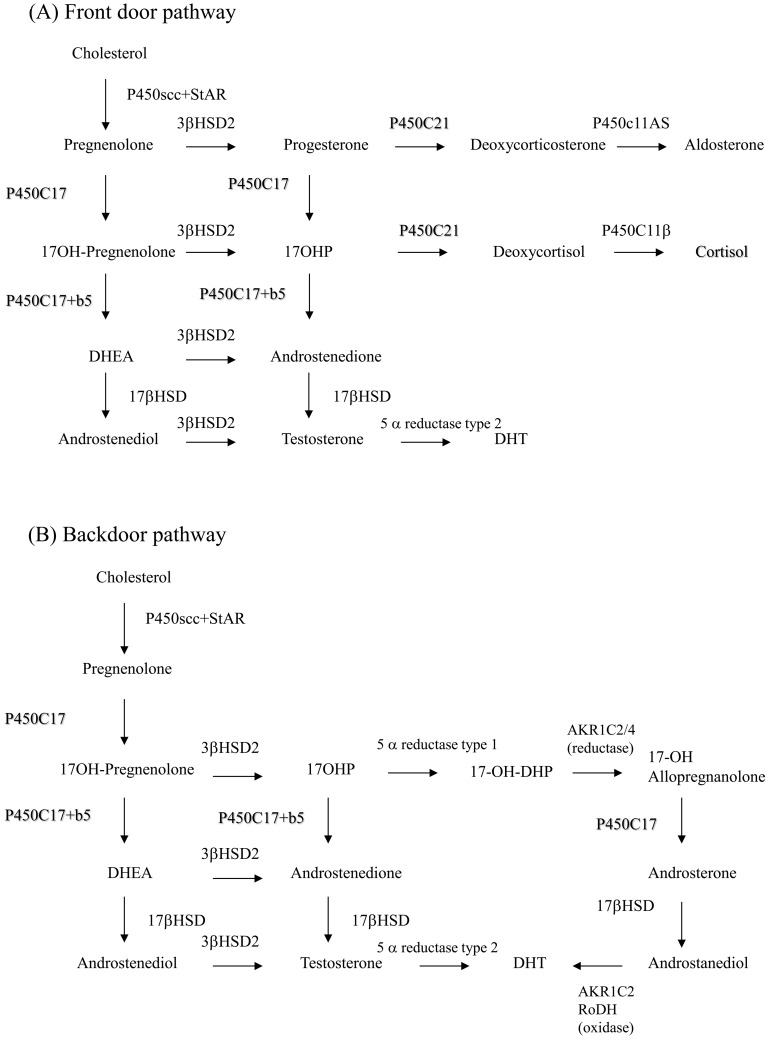Fig. 1.
(A) Front door pathway. Steroid production in the normal fetus. 3β-HSD activity is low in the fetal adrenal gland, and the most produced adrenal steroid is DHEA (and DHEA-S). However, small amounts of steroids go into the aldosterone and cortisol pathways. 21-hydroxylase in the adrenal gland is required for both pathways. The adrenal gland can produce small amounts of testosterone through the activity of 17β-HSD. (B) Backdoor pathway. If 21-hydroxylase (P450c21) is deficient, three pathways produce androgen. The first is a pathway from cholesterol to DHEA. Large amounts of DHEA are converted to DHEA-S and inactivated, while some DHEA is converted to testosterone and dihydrotestosterone (DHT). In the second pathway of the normal adrenal gland, a tiny amount of 17-OHP is converted to androstenedione, small amounts of 17-OHP produced in CAH are converted to androstenedione, and testosterone is produced. The third pathway is a backdoor pathway in which 17-OHP undergoes by 5α- and 3β-reduction and is converted to 17-OH allopregnanolone. This steroid is converted to androstanediol, oxidized by 3α-HSD oxidoreductase and converted to DHT. This pathway was first found in Marsupialia and mammals and is also present in humans based on urine steroid analysis using mass spectrometry. This pathway is thought to be involved in virilization of the external genitalia in girls with 21-OHD.

